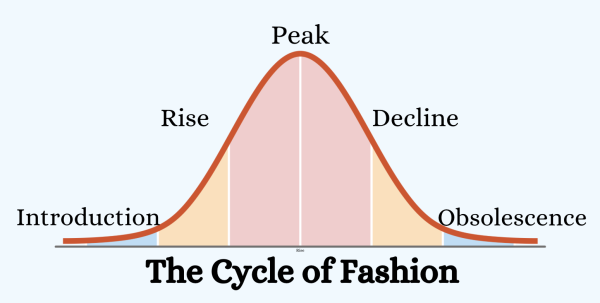Naughty or Nice: Mathe-magically calculating your location on the lists
Pictured is a child’s Christmas wish list for Santa Claus.
December 11, 2019
Throughout the dawn of mankind’s history, our ancestors as a species have always strived to explain the unexplainable, define the undefinable, and solve the unsolvable. From the discovery of fire to putting a man on the moon, the only question which humanity does not seek to answer is “When should we stop?”
Allow me to list out a few names for you, the greatest minds of all time: Albert Einstein, Isaac Newton, Thomas Edison- and now Kobi Khong (12). Over the course of this article I will single handedly mathematically discover the true algorithmic formula that Old Saint Nick himself uses to judge all the children across the world–or die trying.
In order to establish a truly correct point system, I needed to start with the basics; our investigation first took us to Mrs. Farrell (Staff) of biology fame, who taught us the building blocks of any science: the scientific method, which is composed of “systematic observation, measurement, and experiment, and the formulation, testing, and modification of hypotheses.”
With the structure of our plan in motion, our next mentor was the Captain of Calculus, Mr. Wesley Peacock (Staff); I approached him with the question, since there exists a fundamental theorem of calculus, was there a fundamental theorem of Christmas? His answer was “No,” and at that point I knew that finding the secrets behind Santa’s shrewdness would be harder than I thought.
With all the components needed to calculate the divine equation; all we needed to do was define the variables.
(p1 ) symbolizes “puppies” and is 2.019 multiplied by the number of times this year you’ve either internally or externally screamed “puppy” when seeing someone walking a dog.
(p2 ) is “parking” and is the measurement of millimeters you parked crooked from the lines in the senior parking lot.
(y) represents “Yelp” and is measured by exponential function 2 to the x power, with x being the number of Yelp reviews you’ve left at restaurants you’ve eaten at telling people what’s good to order for the people who aren’t sure if they’d prefer the chicken carbonara or the fettuccini alfredo, and don’t know the difference but are embarrassed to ask the waiter.
(a1) stands for “Android,” and it represents the number of people who have an Android that you continue to be friends with even though they mess up I-Message group chats, and is meant to simulate the philanthropic nature of society (if you are the android user substitute the variable (a1) with -2020).
(Hol) indicates “Happiness of learning”, and is how excited you are to learn about new subjects in class and is regularly recorded throughout schools on a scale averaging a range of about -81,001 to 3.14.
(i) denotes “interruption” and is equal to -12.25 multiplied by the number of times you’ve interrupted someone telling a story to tell a barely related story that you remembered only because you heard a word in the first story that reminded you of a story you had.
(ays) signifies “ahh, yes super” which is a simple numbering system from 1 to 10 on how you feel you’re doing, because even Kris Kringle knows the power of self confidence.
(H) represents the amount of Holiday Spirit within an individual and is used to calculate whether someone is on the nice list or the naughty list!
But without further ado, I hereby present to you the undeniably accurate mathematically proven scientific method in determining anyone’s place on Santa’s List:
H = ∑ {[(a1) + (p1)] / [p2 – y]} + {[(Hol) – (i / d)] * (ays)}!













































